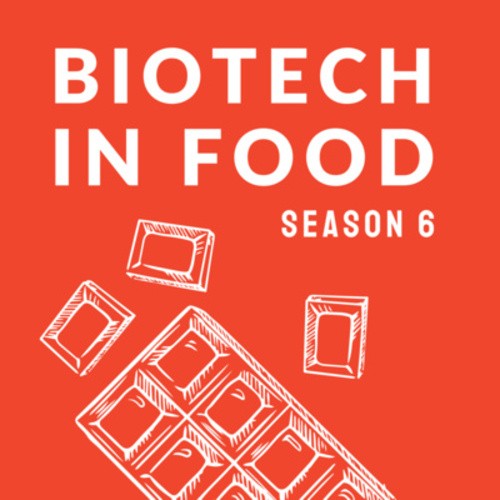
6.3. Gas fermentation proteins made from nothing except CO2, hydrogen and salt - with Arkeon Co-Founder and CEO Gregor Tegel
Red to Green Food Tech ♻️ Future of Food | Cultured Meat | Food Waste | Biotechnology
Episode · 0 Play
Episode · 39:42 · Dec 7, 2022
About
What if you could make pure protein by feeding microbes CO2 and hydrogen? This technology is independent of soil and sun and just badass. Sci-Fi is real, I tell you. Sci-Fi is real.  In this season we have looked at precision fermentation and biomass fermentation. If that doesn't mean much to you, don't worry. You will still be able to understand this episode. Both of these technologies need some kind of input. For example yeast in precision, fermentation needs sugars and other nutrients mixed into the broth in the bioreactor. And in solid biomass fermentation, you for example would need some kind of grain for the mycelium, the root structure of a mushroom, to grow in. But what if you wouldn't need any agricultural input? What if you could use a microbe that is so badass that it makes proteins from CO2 and hydrogen? Gregor came across gas fermentation on a quest to find the most sustainable food humanity can produce. You will hear from Gregor Tegl, co-Founder and CEO of Arkeon today, a company based in Austria. LINKS Check out our supporter of this season FoodLabs and their Climate Program: https://www.foodlabs.com/ More info and links to resources on https://redtogreen.solutions/   For sponsorships, collaborations, volunteering, or feedback write Marina at change@redtogreen.solutions Please leave a review on iTunes https://podcasts.apple.com/de/podcast/red-to-green-food-sustainability/id1511303510 Connect with Marina Schmidt https://www.linkedin.com/in/schmidt-marina/ Show notes DNA sequence comparisons consistently categorize all living organisms into 3 primary domains: Bacteria that are classified as prokaryotes Archaea (Arkea) Bacteria and Archaea are called prokaryotes, which means they are unicellular organisms. And they were likely the first ones on planet earth. Almost all prokaryotes have a cell wall, a protective structure that allows them to survive in extreme conditions. That isn't always the case for the third type. Eukarya (also called Eukaryotes) includes us and all other animals, plants, and fungi. All organisms whose cells have a nucleus to enclose their DNA apart from the rest of the cell. The bottom line is that different technologies and processes tap into different types of organisms. Most fermented foods, including kimchi and sauerkraut, are made using bacteria. Precision fermentation also uses bacteria, but they are most likely genetically engineered, as well as yeast, which is part of the fungi kingdom. But this second category, the Archaea, survives incredibly extreme environments and deserves special attention. Don't worry if that was too much info all at once. You will find this part in the show notes if you want to read it. Hashtags and topics for the episode gas fermentation arkeon biotechnologies Pressure fermentation importance Why is fermentation important what does fermentation yield Carbon utilization in food Hashtags for the season is biomass fermentation safe what is biomass fermentation what is microbial biomass in fermentation nature's fynd Plant based cheese Plant based cream cheese
39m 42s · Dec 7, 2022
© 2022 Spreaker (OG)